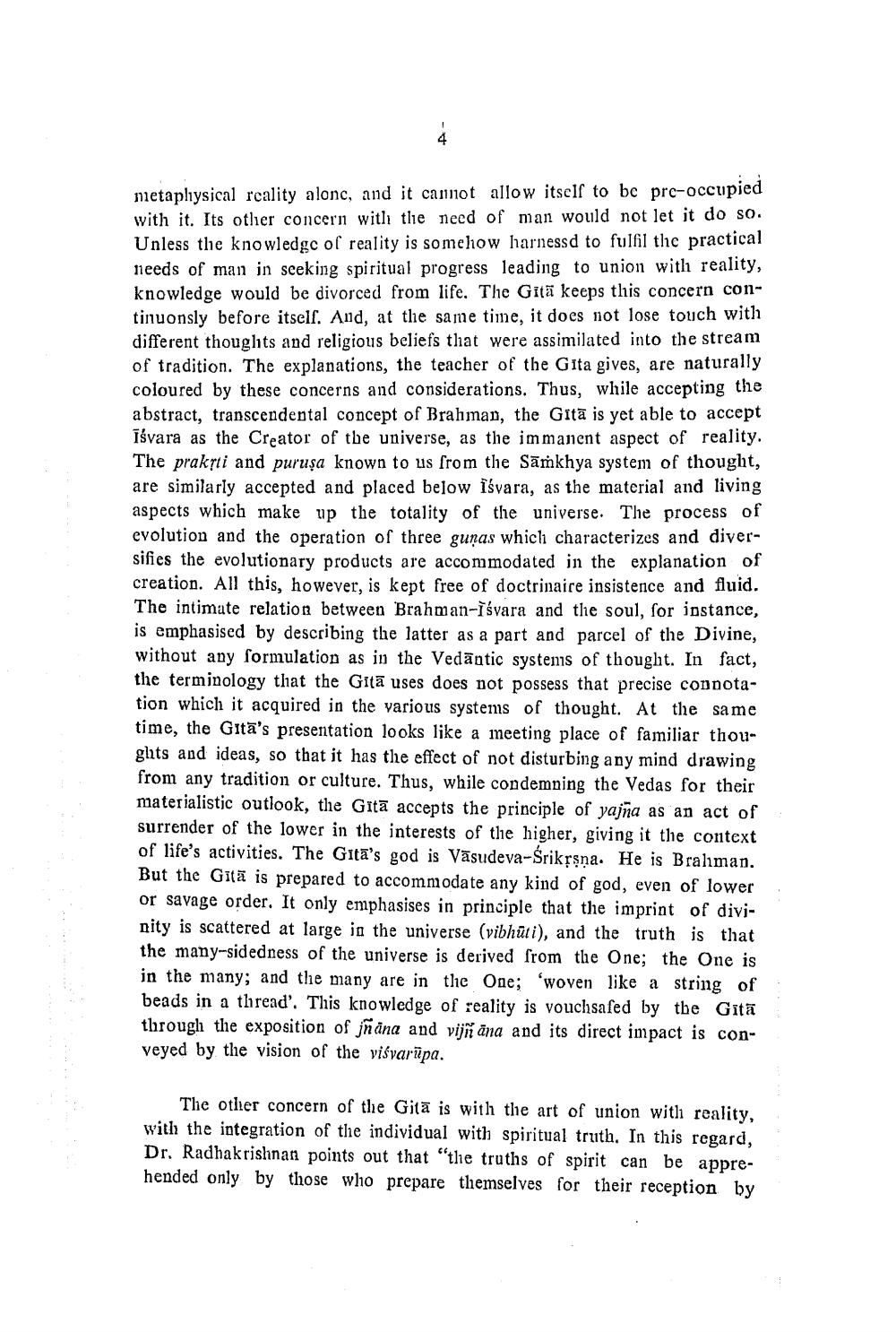________________
metaplıysical reality alonc, and it cannot allow itself to be pre-occupied with it. Its other concern with the need of man would not let it do so. Unless the knowledgc of reality is somehow harnessd to fulfil the practical needs of man in seeking spiritual progress leading to union with reality, knowledge would be divorced from life. The Gitä keeps this concern continuonsly before itself. And, at the same time, it does not lose touch with different thoughts and religious beliefs that were assimilated into the stream of tradition. The explanations, the teacher of the Gita gives, are naturally coloured by these concerns and considerations. Thus, while accepting the abstract, transcendental concept of Brahman, the Gitā is yet able to accept īśvara as the Creator of the universe, as the immanent aspect of reality. The praksti and puruşa known to us from the Samkhya system of thought, are similarly accepted and placed below iśvara, as the material and living aspects which make up the totality of the universe. The process of evolution and the operation of three gunas whichi characterizes and diversifies the evolutionary products are accommodated in the explanation of creation. All this, however, is kept free of doctrinaire insistence and fluid. The intimate relation between Brahman-iśvara and the soul, for instance, is emphasised by describing the latter as a part and parcel of the Divine, without any formulation as in the Vedāntic systems of thought. In fact, the terminology that the Gitā uses does not possess that precise connotation which it acquired in the various systems of thought. At the same time, the Gitā's presentation looks like a meeting place of familiar thoughts and ideas, so that it has the effect of not disturbing any mind drawing from any tradition or culture. Thus, while condemning the Vedas for their materialistic outlook, the Gitā accepts the principle of yajña as an act of surrender of the lower in the interests of the higher, giving it the context of life's activities. The Gita's god is Vāsudeva-Srikrsna. He is Brahman. But the Gitä is prepared to accommodate any kind of god, even of lower or savage order. It only emphasises in principle that the imprint of divinity is scattered at large in the universe (vibhūti), and the truth is that the many-sidedness of the universe is derived from the One; the One is in the many; and the many are in the One; 'woven like a string of beads in a thread'. This knowledge of reality is vouchsafed by the Gitā through the exposition of jñana and vijñāna and its direct impact is conveyed by the vision of the viśvarüpa.
The other concern of the Gitā is with the art of union with reality, with the integration of the individual with spiritual truth. In this regard, Dr. Radhakrishnan points out that "the truths of spirit can be apprehended only by those who prepare themselves for their reception by




